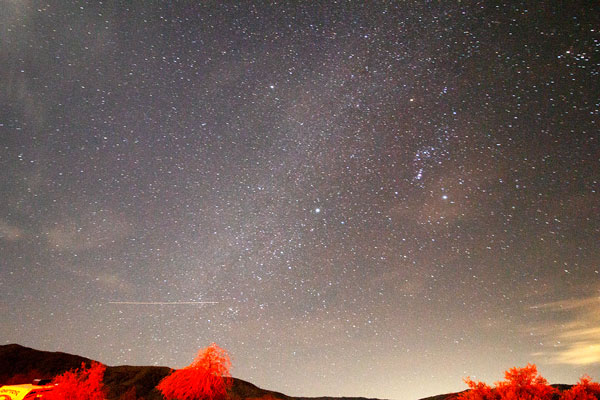The angular momentum problem described in the previous post is just one of the interesting physics concepts of planet formation. This post continues the discussion on planet formation and describes how the evolution of proto disks can be tracked and identified. In addition, we will discuss AAVSO and Chandra collaboration and travelling to the Nightfall star party in Borrego Springs.
Last time I mentioned how I had been reading the book laying out a dialog between two competing theories of planet formation. It was hard to work through what the issues were so I found another book, maybe a more mainstream book, that goes into the current best understanding of planet formation. This book has chapters, each written by an expert in the field, that cover the various stages of planet formation. It looks like a very good, accessible book and I am just getting started. I especially like the book' emphasis on observation, measurement and experiment.
 |
| Planet Formation: Theory, Observation and Experiments edited by Klahr and Brandner |
One of the first things the book described was how the spectral energy distribution (SED) measured for young T Tauri type stars can be used track the current status and evolution of planetary systems. The following chart shows how the SED classification is matched with the evolutionary state of the system.
Look at how during the early stage when the molecular cloud is collapsing under gravitational attraction. The SED is peaked in the infrared due to the thermal heating of the cloud. Then as the disk becomes more refined, the spectra changes and includes absorption lines, not just emission lines. So it is possible to determine the state of proto solar system using the SED.
Class II is considered the stage where planets will be formed. Class III is the stage where planets have formed and at the same time the star system has just entered the main sequence of star formation as shown on the HR diagram.
 |
| Spectral Energy Distribution identification with disk evolution (Klahr&Bradner, "Planet Formation") |
Another observational tool that can provide evidence of the underlying stellar physics is just plain old light curve analysis. Measuring stellar spectra requires either a very bright star or a very large telescope to gather enough light because the spectrograph spreads out all of the received light. So instead of all of the light showing up on one camera pixel it is spread over thousands of other pixels in the spectrograph.
What is going on inside the star to cause the mostly periodic changes in light emitted by the star? Other studies of the surrounding planetary disk and its observed change in brightness is considered to be caused by internal physical changes. Look how stellar outbursts, which show up as transient increases in light output, can be tied back to internal changes in the star that affects the stellar disk.
 |
| Star and disk thermal instability and the underlying physics (Source: P. Armitage, "Dynamics of Protoplanetary Disks) |
This describes how and why some young, T Tauri type protostars, exhibit the variable light curves that they do. This is interesting in that the physical processes responsible for the amount of emitted light do not all just reside inside the star itself but rely on an interaction with the rest of the stellar disk. So the interactions of the star and disk and interactions in the disk itself, like the shifting of angular momentum from the inner part of the disk to the outer part of the disk can be studied by both spectral analysis and light curve analysis. It turns out that professional astronomers make measurements of these variable stars to get better understanding of the physics involved in disk and star formation. As you know, the AAVSO often gets asked to provide additional observations to support ongoing research. In particular, the following announcement asks for additional observations of a T Tauri type binary that Chandra X-ray Observatory is scheduled to examine in more detail. The amateur observations in visible light will help support the interpretation of the x-ray images.
 |
| AAVSO Announcement seeking measurements to support Chandra telescope observations |
Ok, we have to leave off more astrophysics and pack our bags for the Nightfall astronomy event in Borrego Springs. Nightfall is sponsored by the Riverside Astronomical Society and lots of folks show up for the dark desert skies and seminars and vender displays.
So here we are in Borrego Springs for Nightfall, where we hope to do some great dark sky observing and maybe even pretend to gather a light curve measurement for AAVSO request for XZ Tau. I say, "pretend", because I have not come up to technical capability to make the light curve with all of the corrections necessary to achieve the required accuracy.
Well our arrival night here had just a few too many clouds that blocked our view of where the Milky Way came down to the horizon. So we elected to not set up the scope and just relax for the evening. In the morning, the other end of the Milky Way was just at the horizon and the clouds were gone. This DSLR image is what the sky looked like. Maybe tonight the clouds will be gone also.
 |
| One end of the Milky Way in this 60 second, 10mm DSLR image (Source: Palmia Observatory) |
Until next time,
Resident Astronomer George
If you are interested in things astronomical or in astrophysics and cosmology
Check out this blog at www.palmiaobservatory.com

No comments:
Post a Comment